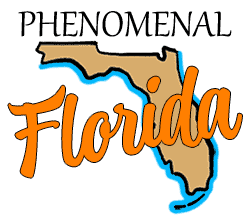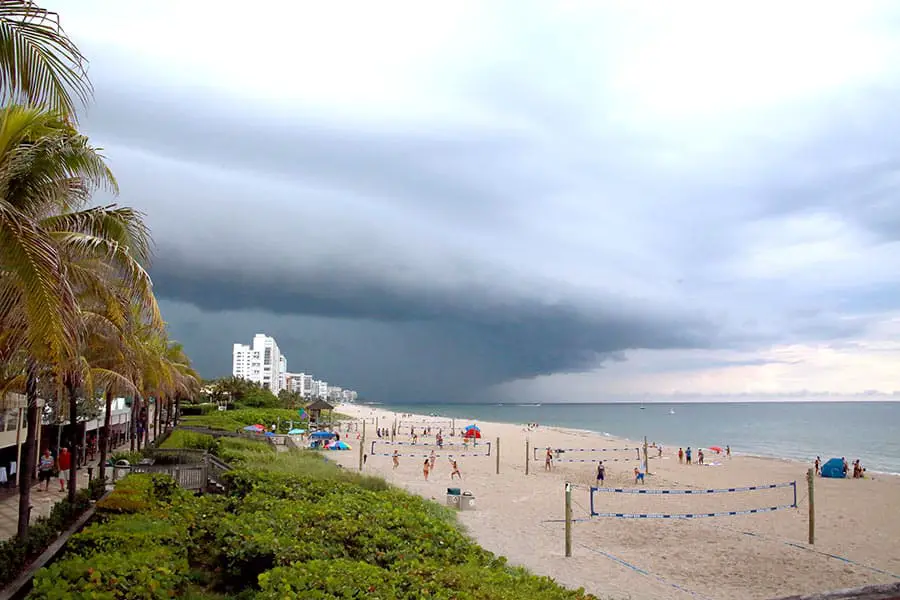
Florida is rumored to be a tropical paradise, a land of eternal sunshine and year-round balmy weather. Heck, we even have a license plate that says “Endless Summer” on it! But does Florida have seasons?
Florida does have seasons, although they feel a little different from other places. The warm weather means that most trees don’t change color in Autumn. The winter months are mild, and the summer humidity is noteworthy. While they definitely have a unique Florida flavor, there are seasons.
Does it ever snow or freeze in Florida? How bad is the heat in Florida? Does it take a long time to acclimate to Florida’s weather? Read on to learn the answers to these questions and more.
The Seasons of the Sunshine State
Florida’s seasons are definitely a little different. If you come from a place like Minnesota or Pennsylvania, you’ll likely find Florida’s seasons to be somewhat different.
The seasonal changes in Florida are generally milder than they are in other places. Some states might see 100-degree changes in the weather, but Florida typically sees much less serious swings as the seasons progress.
December, January, and February would be the wintery months in Florida. The air temperatures during this time are cooler, but not usually cold. While there is sometimes a frost or freezing weather, most days will be pretty pleasant if a little cool. Winter in Florida is typically a dry season, so there isn’t much rain – and it almost never snows!
Florida’s spring months of March, April, and May are enjoyable indeed. The days are warm but not hot, the air is not usually too humid, and the skies are generally clear and sunny. April marks the beginning of storm season, so you might experience some thunderstorms or rain showers, but they’re usually transient and quick. Spring is a terrific time to venture outside.
As much as we love spring, it also brings bugs. Mosquitoes, black flies, and other insects love the spring vibes almost as much as the humans do. Unfortunately, the bugs get worse in the evening when the breezes die down, so bring some bug spray if you’re planning to be outside later in the day.
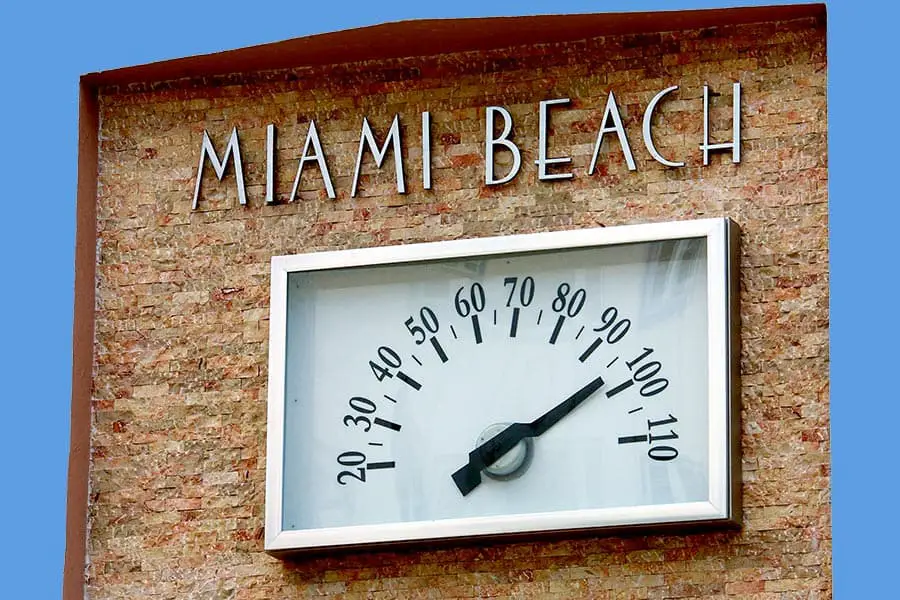
Summer in Florida is just plain hot. June, July, and August bring the heat and the humidity, making these months extra challenging for outdoorsy folks and people who work outside. It’s not unusual to experience brief but intense thunderstorms during the summer, some of which can spin off microbursts or tornadoes. In addition, June marks the beginning of hurricane season, so check your hurricane kit and be prepared.
September, October, and November bring fall. Unlike the crisp autumn air of New England or the Midwest, Florida’s fall months are still pretty hot and humid, although they are noticeably better than the summer. Things usually begin to cool down more in late October or early November.
Notably, September is the most active month for hurricanes in Florida. Many locals keep a watchful eye on the weather in case they need to have a hurricane party. If you haven’t used your party supplies by November, you can have a barbeque or throw a block party to celebrate the end of hurricane season.
Does it Freeze in Florida?
Florida does experience occasional frosts and freezes. A frost is when there is visible frost on objects like plants or cars, whereas a freeze is when the air temperature drops below freezing.
Freezing weather is pretty uncommon in Florida, but it’s not unheard of.
You’re far more likely to see freezing weather in north Florida than you are in the central or southern peninsula, but there have been a few historic winters that brought freezing weather as far south as Fort Myers. On very rare occasions, it even snows in Florida!
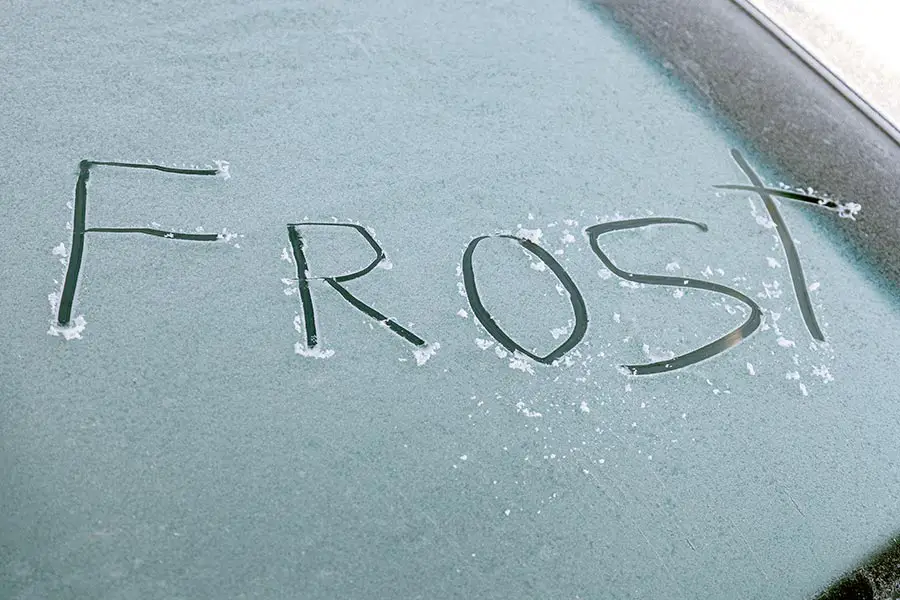
Frost is far more common than freezes or snow. In northern and central Florida, you can expect to experience frost maybe once or twice a year. Frost is a big problem for farmers and growers in Florida because it can cause damage to crops like strawberries and citrus. Professional and amateur growers alike will usually run their sprinklers and cover their crops before a frost to help the fruits stay insulated and minimize their losses.
Nevertheless, you don’t have to be concerned too much about the cold in Florida. Frosts and freezes are outlier events. On most winter days in Florida, the weather is cool but not cold. Here’s a sample of average winter-month low temperatures across Florida:
Average Low Temperatures by Month
| City | December | January | February |
|---|---|---|---|
| Pensacola | 48 | 45 | 48 |
| Jacksonville | 49 | 46 | 49 |
| Tampa | 55 | 52 | 54 |
| Miami | 65 | 63 | 64 |
Other Posts of Interest
- Is It Hard To Drive In Orlando, Florida?
- Can You Find Sea Glass In Florida?
- Is It Cheaper To Live In Florida Or Arizona?
- Is Key Largo Cheaper Than Key West?
Is Florida Heat Unbearable?
Florida can get very, very hot. The combination of high air temperatures and high humidity can bring the heat index to well above 100 degrees. During the summer months, many locals will joke that they only go outside to move between air-conditioned locations. However, if it’s a hot and humid day, it can feel quite oppressive.
How unbearable is the heat? We’ve made this handy table using the heat index. This index is a better measurement than plain air temperature because it reflects how your body perceives the heat. Using the average monthly highs and an assumed humidity of 70%, we can see that Florida gets pretty darn hot:
Average Heat Index by Month
| City | June | July | August |
|---|---|---|---|
| Pensacola | 95 | 103 | 100 |
| Jacksonville | 98 | 106 | 106 |
| Tampa | 106 | 106 | 106 |
| Miami | 95 | 103 | 106 |
As you can see, Florida can be hot. The heat is something that you will need to consider when planning your activities over Florida’s summer months. Here are some of our favorite tips to beat the heat:
- Most modern weather apps display the heat index, or the “feels like” temperature. Use this temperature, not just the air temperature, for planning your day.
- Plan to go out in the mornings or evenings. Noon to about 4 PM is usually the hottest time of day.
- Stay hydrated. Drink plenty of water. Bring an insulated water bottle with ice water in it when you go out.
- Dress for success. Hats, sunglasses, lightweight clothes, and sunscreen will help you endure the heat.
- Take A/C breaks. Most attractions have plenty of shops and restaurants with A/C. If you’re going to be outdoors, take shade breaks.
- Use a sun shade in your car.
- In your home, turn off superfluous electronics, draw the shades, and switch to LED lights, which emit less heat.
Phenomenal Florida Fun Fact: The highest temperature ever recorded in Florida was on June 29, 1931. On that date, the town of Monticello recorded a temperature of 109 degrees!
Why Doesn’t It Get Cold in Florida?
Florida stays warm for three main reasons. First, it is very far south. Florida has the southernmost point in the continental United States, and much of the state is at low latitudes. As one approaches the equator, temperatures tend to get warmer than they are at the poles.
Second, the Florida peninsula is surrounded on three sides by water. Water moderates temperatures: without the oceans, Florida would likely have a far more volatile climate.
The oceans around the Florida peninsula also generate strong easterly winds that tend to keep cold air masses at bay. As cold air masses move out from the poles and spread towards areas of warmer air, the jet stream and the gulf stream work together to keep the air over Florida warmer than other areas.
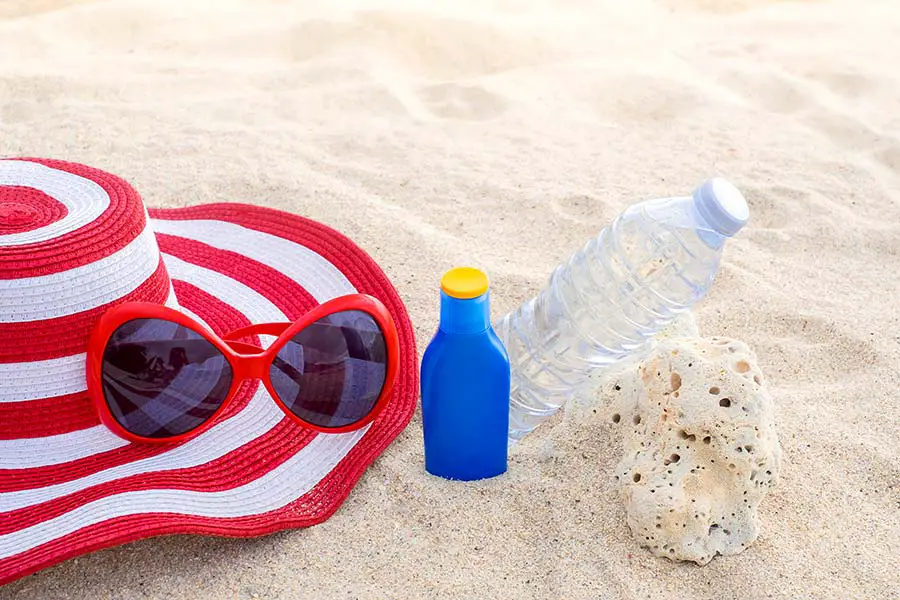
How Long Does It Take to Get Used to Florida Heat?
Scientists say that it takes people about two weeks to acclimatize to a new kind of weather. That is true, but the prolonged heat and slightly different seasonal rhythm of Florida can be a shocker.
Of course, the winter months will be the easiest: while your chums in Ohio or Washington are bundling up, you’ll be strolling about in flip-flops and a t-shirt. But the summertime will be a shocker.
Temperatures begin to warm up in the late spring, and by July and August, the scorch is on. If you are used to milder summers, you will likely find the heat in Florida to be a whole new experience. It can be an enveloping, oppressive kind of heat, especially in high summer.
Just like people in wintery states know to bring boots and jackets and keep an ice scraper in the car during the cold season, people in Florida know to bring water and plan around the heat in the summer.
It might seem like you’ll never get used to the heat here, but people are adaptable. You will adjust! After a few years of living in Florida, you’ll get the rhythm of the seasons and find yourself instinctively knowing how to handle the warm weather.
Cooling Off
You won’t find snowmen or piles of autumn leaves in the Sunshine State, but the seasons do change. After our mild winter, we enjoy a warm spring, endure a blazing summer, and find ourselves pleasantly delighted by the return to normal temperatures in the fall.
Of course, our seasons might not be 100% traditional, but that’s just Florida being Florida. So whether you come in the dead of winter or the heat of summer, see you out there!
